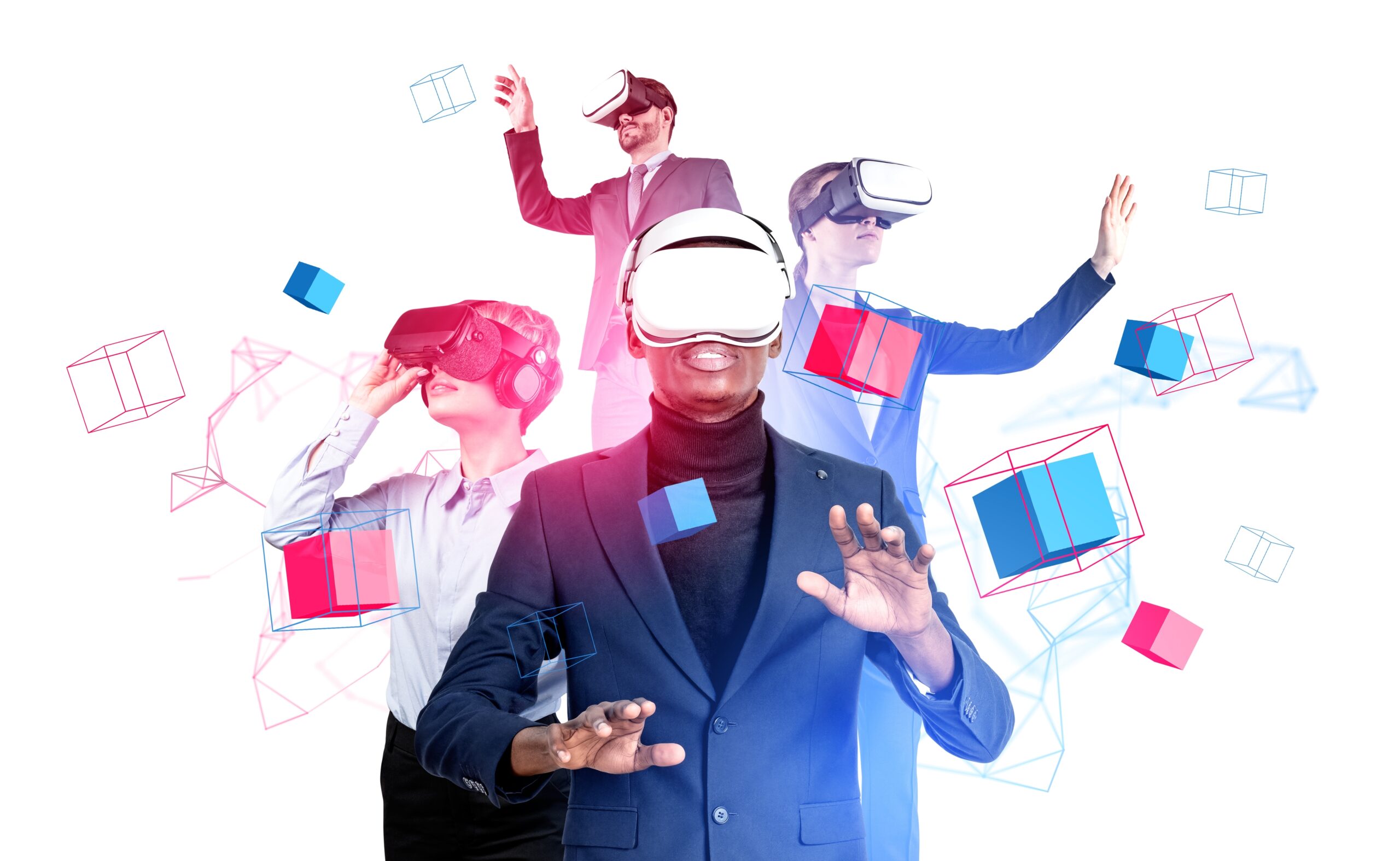Adopt, ignore or adapt: the future of meetings and immersive reality
Sure, we all know what the metaverse is, right? Well…not exactly. As Wired magazine put it, according to some, “the metaverse is the future of the internet. Or it’s a video game. Or maybe it’s a deeply uncomfortable, worse version of Zoom? It’s hard to say.”
Can this thing that no one is sure about, be something we have to contend with in the professional meeting space? If we take a cue from what happened during Covid, then I believe the answer is, “Yes.” I’m sure many of us experienced the “wait and see” attitude some people took during the pandemic, while others used the time to learn all that they could about virtual events, which meant they probably also started to learn about the metaverse. With the global pandemic mostly in the rearview mirror, now is the time for everyone to think about the metaverse in relation to the meeting planning industry. Because if Covid taught us anything, virtual events aren’t going anywhere and if anything, we’re about to do another major one-up in the virtual space. Enter: the metaverse.
Are We There Yet?
First, is there an agreed-on definition? Is it just games, is it everything, is it just the newest iteration of the internet?
Wikipedia describes the metaverse as “a hypothetical iteration of the Internet as a single, universal, and immersive virtual world that is facilitated by the use of virtual reality and augmented reality headsets.”
Read More: What Do NFTs and the Metaverse Offer Planners?
Translated into the world of meetings, this means tech for the everyday attendee will go beyond a smartphone or laptop. The role of technology will continue to evolve and tech like VR headsets will become the norm.
Metaverse = a hypothetical iteration of the Internet as a single, universal, and immersive virtual world that is facilitated by the use of virtual reality and augmented reality headsets
What’s in the metaverse?
Even though definitions differ, it’s generally useful to think about the metaverse as an immersive experience, aka virtual reality. Participants need to not just see and hear; they need to feel as if they’re somewhere else. All the senses need to be involved. Think of watching an enthralling movie. Even if you jump at a loud noise onscreen, you still feel the seat underneath you, you smell the popcorn, and you see the green glow of the Exit sign. You’re involved in the movie, but you’re still at the theatre and aware of your actual surrounding in real life. In the metaverse, you’re fully immersed in the virtual space in a 360-degree way. Once immersed, you’ve disconnected your senses from real life and your brain is tricked into thinking you are actually in the movie.
Is the Metaverse for Everyone?

If the technology itself needs to go beyond current state (think about seamless hand-operated controllers; completely comfortable headsets; controlling the scents and ambient noise), how does that technology accommodate everyone? Meetings and events still need to work for each different person and situation, regardless of physical, socio-economic, neurological or other differences.
That all sounds like a lot of “new,” which translates to cost: the cost of the technology, the cost to hire people to manage it; the cost to adapt to a new way of running events. Who will be responsible? Who controls it?
Despite all these questions, some organizations are already jumping in. Not surprisingly, it’s the tech companies themselves, like Meta and Microsoft, leading the way.
Read More: Metaverse Replicas of Event Venues Make Site Inspections Faster, Easier and Greener
Does that mean only huge, global companies can take advantage of it right now? Not necessarily. On a smaller scale, you see organizations creating single, immersive experiences, perhaps around a concert or a game.
What is Your Path Forward?
If the big players are all in, and the small players are trying it out, clearly the advantages are there.
- Interaction. The metaverse helps your customers, or in the case of meetings—attendees, interact with people they normally wouldn’t. It removes the time/space barriers and provides a space to meet that can work for everyone.
- Immersive. Yes, virtual meetings can be fun, but immersive meetings take participants beyond their computer to feeling the energy of being in the room with their peers. This is truly “social” media, in the fullest sense, and they can deliver more than a digital platform. Meetings and events in the metaverse can deliver a whole new world for attendees to interact in.
- Innovation. The metaverse is a work in progress. Not every leader has to figure this out. In fact, letting the digital creators on your team lead the way may be the best. Chances are they’re digital natives and will find the concept more appealing and the barriers less daunting.
Three Tips for Right Now
- Apply the lens of your brand to the metaverse. With anything new, the first question to ask is: does this align with brand? Does this appeal to your target market? You never want to jump into something new and find your audience has been left behind, either out of confusion or disinterest. Think about how carefully you orchestrate entertainment, venue and speakers to align with your brand. This is one more element—arguably bigger—that has to align with your audience.
- Adapt before you adopt. The next question to ask is, how do we continue to adapt? Even if jumping fully into the metaverse right now isn’t right (either for your company or your audience), the “now” state won’t be around for long. Just as with every other trend, good meeting planners need to anticipate what’s coming and plan for it.
- Ask your innovators. While you’re observing and listening, try creating an innovation hub before you have anything fully figured out. Invite people on your team who are committed to learning more to stay engaged with latest developments and trends, suggest small ways to invest in technology, and see where it leads. Position it like a “think tank” within your company charged with looking at “how could we/should we/do we evolve in this space.”
The metaverse isn’t going away, but it’s not standing still either. Learn about it, just like you would with any other new development. Just know that this one may be less like getting the latest version of a smartphone, and more like the introduction of smartphones.
—
Melissa Patruno, executive producer at Bishop-McCann, has been helming events for Fortune 500 and 100 companies since 2011. With her Digital Event Strategist (DES) certification from PCMA, Melissa has been the driving force behind Bishop-McCann’s virtual event strategy.
This article appears in the March 2023 issue. You can subscribe to the magazine here.





